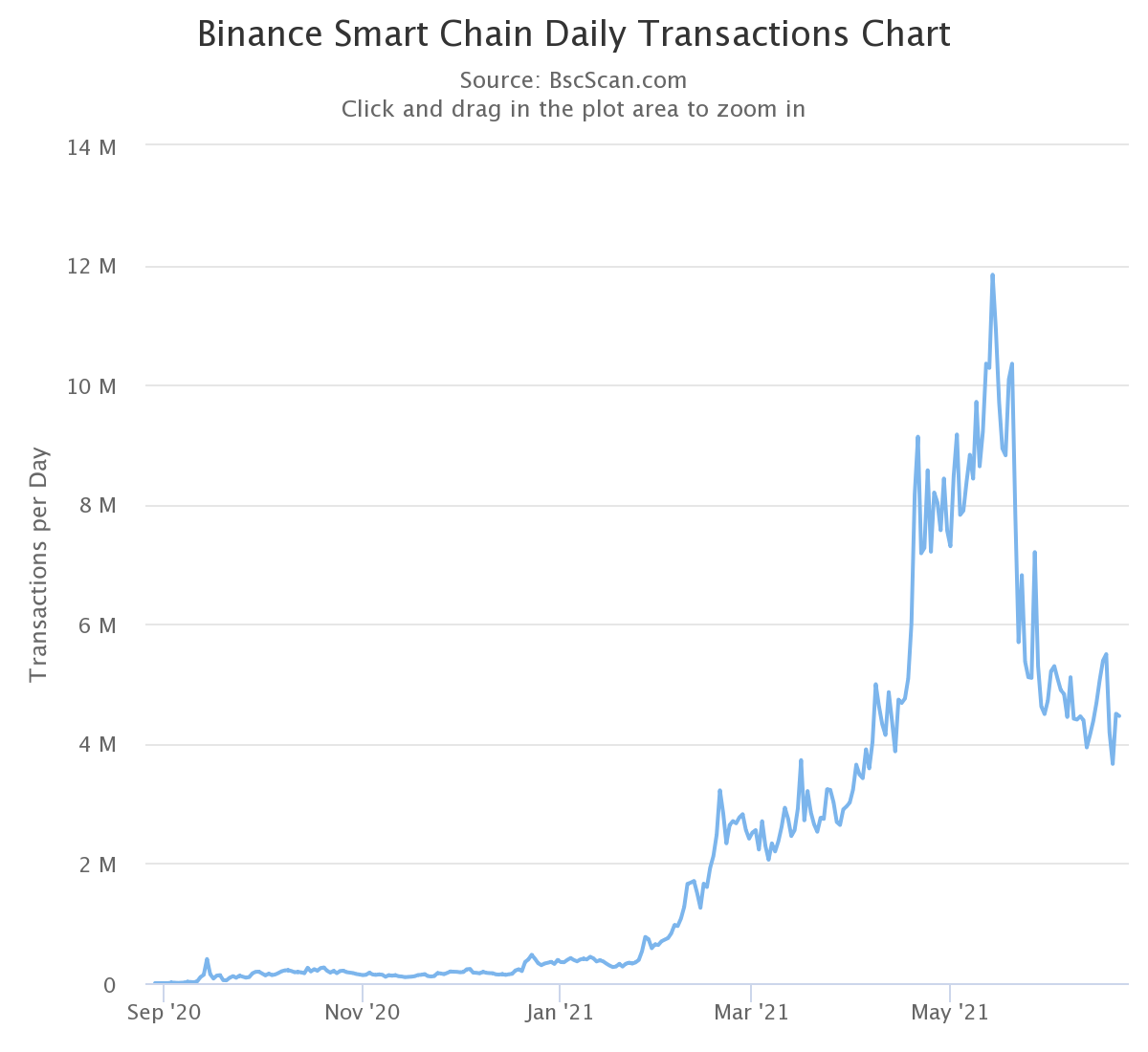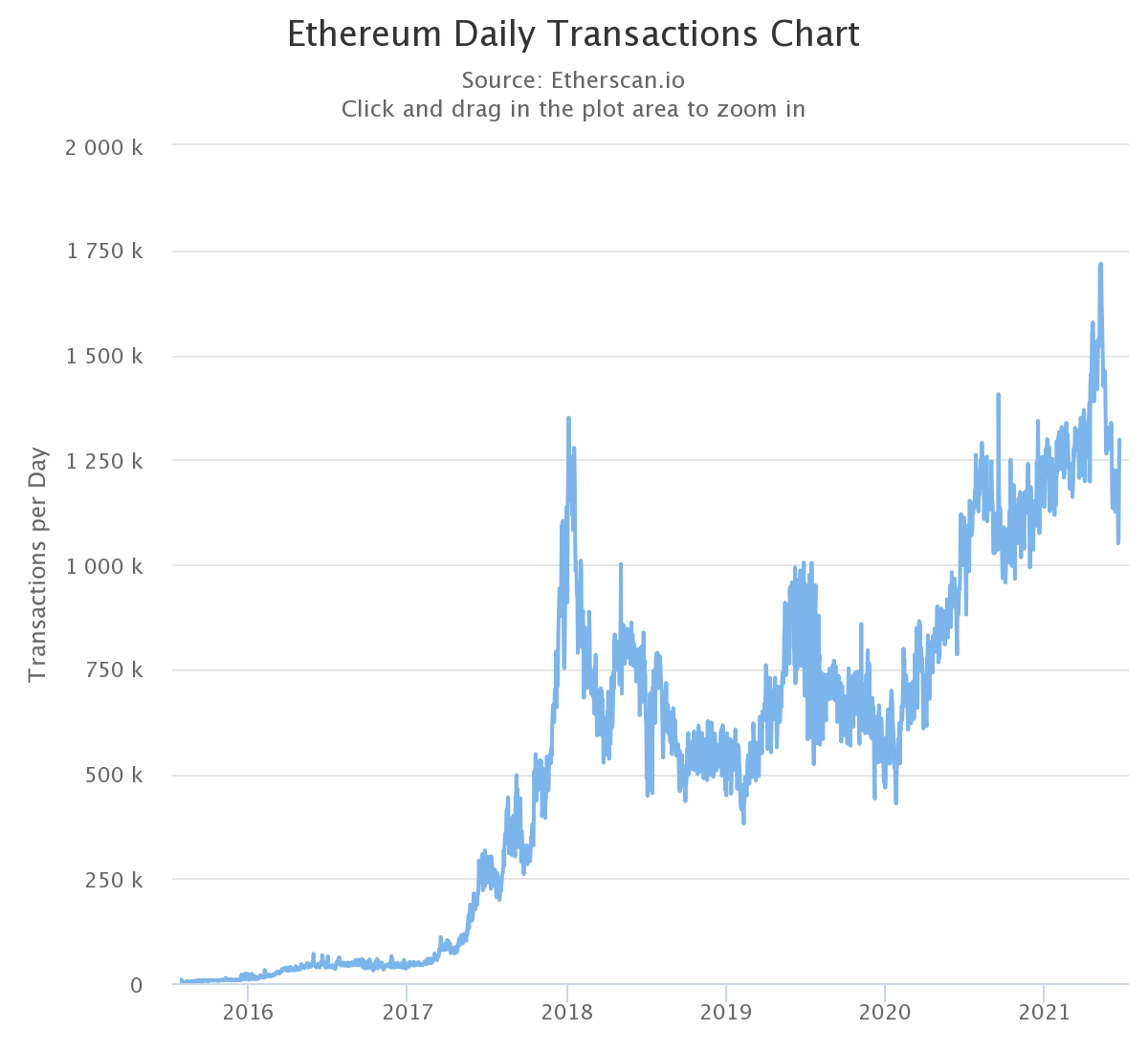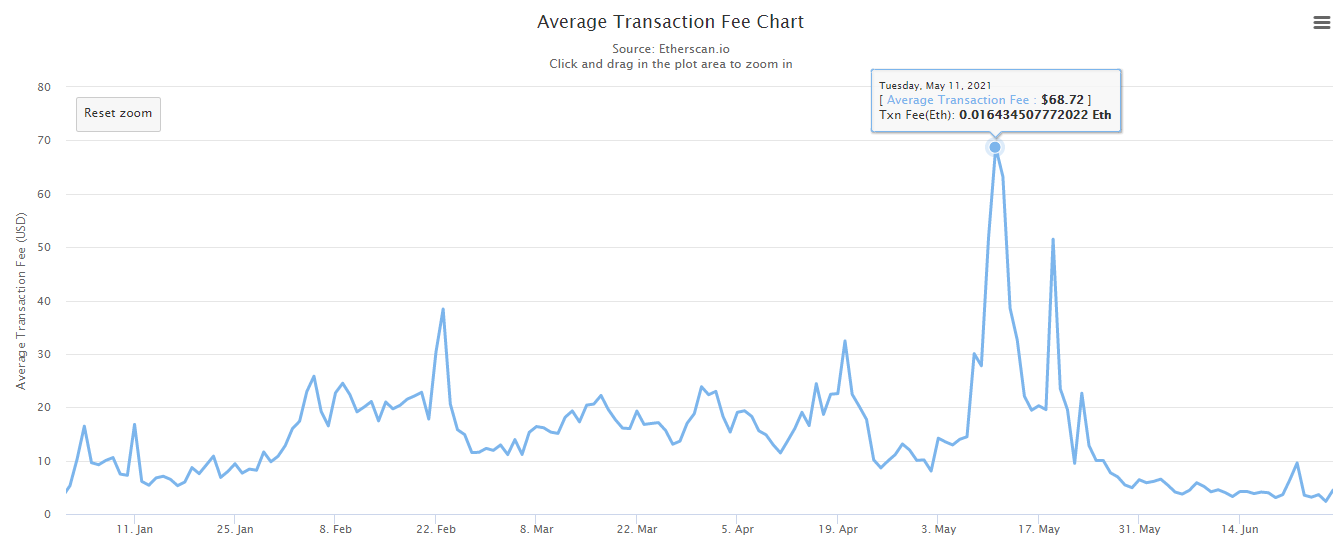In brief
Binance Smart Chain (BSC) is a hard fork of the Go Ethereum (Geth) protocol. Therefore, it has many similarities with the Ethereum blockchain. However, BSC developers have made significant changes in some aspects. Among them, the biggest change is the consensus mechanism, allowing BSC to trade cheaper and faster.
Introduce
At first glance, Binance Smart Chain (BSC) and Ethereum look very similar. DApps and tokens built on BSC are compatible with the Ethereum Virtual Machine (EVM). You may notice that your public wallet address on both blockchains is the same. There are even cross-chain projects that operate on both networks. However, there are some notable differences between the two series. If you are wondering which one to use, it is best to know and understand the differences.
Blockchain traffic and DApp ecosystem
As of June 2021, Ethereum hosted more than 2,800 DApps on the blockchain, compared to about 810 on BSC. This is a significant difference, but considering the age of BSC, this number still shows that the BSC ecosystem is growing strongly.
Active addresses are also an important on-chain metric to consider. Despite being a newer blockchain, BSC recorded 2,105,367 active addresses on June 7, 2021 - double Ethereum's all-time high of 799,580 addresses on May 9, 2021. 2021.
So, what is the reason behind BSC's sudden growth? The main reason is fast confirmation time and lower fees. BSC's growth may also be related to the growing hype of NFTs and compatibility with popular cryptocurrency wallets, such as Trust Wallet and MetaMask.
If we look at the daily transactions, there is a big difference between the two chains. On BSC, users transfer funds and interact with smart contracts more quickly and cost-effectively. You can see below BSC's peak activity - around 12 million daily transactions and its current status is over four million.

Meanwhile, Ethereum has never exceeded 1.75 million daily transactions. For users who need to transfer money frequently, BSC seems to be the more popular choice. Daily transactions also need to be seen in the context of active addresses. As written, BSC now has more average trading users.

Most used DeFi DApps on Ethereum and BSC
When it comes to decentralized finance, there is a large number of cross-DApps between BSC and Ethereum, due to the compatibility of the blockchains. Developers can easily port applications from Ethereum to BSC, and new BSC projects often reuse open source code from Ethereum under a different name. Let's look at the top five DApps on Ethereum by users on DAppRadar.

Here you can see there are two DeFi Automated Market Makers (Uniswap and SushiSwap), a crypto game (Axie Infinity) and a peer-to-peer NFT marketplace (OpenSea). If you look at the top 5 companies using BSC, you will see a lot of similarities.

PancakeSwap was created as a hard fork of Uniswap. Autofarm and Pancake Bunny are yield mining farms - an area we don't see in the top five Ethereum Dapps. Biswap and Apeswap are both Automated Market Makers. Since fees on BSC are very cheap and transactions are significantly faster, yield mining farms tend to be more efficient when operating on Binance Smart Chain. These factors make these projects a popular choice for BSC users.
When it comes to crypto games, Ethereum is truly home to some of the most popular titles out there. Although there are projects on BSC that are very similar to CryptoKitties and Axie Infinity, they do not attract as large an audience as the classic games on Ethereum.
Ability to transmit between networks
If you have made any deposits of BEP-20 or ERC-20 tokens to your wallet, you may have noticed that your Ethereum and BSC wallet addresses are identical. So if you choose the wrong network when withdrawing tokens from an exchange, you can easily get them back from that blockchain.
If you accidentally withdrew ERC-20 tokens to BSC, you can still find them in the corresponding BSC address. You can also do the same process if you accidentally sent tokens from BSC to Ethereum. In both of these cases, luckily your money is not lost forever. For more detailed instructions, read How to Recover Cryptocurrencies Transferred to the Wrong Network on Binance.
Transaction fees
BSC and Ethereum both use a gas model to calculate transaction fees and measure the complexity of a transaction. BSC users can set gas prices according to network demand, and miners will prioritize transactions with higher gas prices. However, Ethereum's London hard fork will bring several modifications that could potentially eliminate the need for high fees.
The Ethereum update creates a new pricing mechanism with a base fee per block. This base fee varies depending on transaction demand, eliminating the need for users to determine gas prices themselves.
Historically, Ethereum gas fees have been much higher than those on BSC. The highest average fee was seen in May 2021 at $68.72. This trend is already starting to appear, but currently Ethereum's fees are still more expensive.

Let's look at the average cost for Ethereum from Etherscan to get the full picture. The top three figures show the current gas price on Ethereum. For both BSC and Ethereum, one gwei is equal to 0.000000001 BNB or ETH, respectively. If you underbid, your transaction will take longer to complete.
To transfer ERC-20 tokens to another wallet, the average price at the time of writing is $2.46. This number increases to $7.58 when using the Uniswap liquidity pool, which involves multiple transactions.

Below we can see a transaction on BSC with a fee of just $0.03, equivalent to an ERC-20 transfer in Ethereum's gas tracker. BSC calculated this by multiplying the amount of gas used in the transaction (21,000) by the gas price (5 gwei).
Transaction time
Measuring average transaction times on blockchains can be a bit complicated. Although a transaction is technically complete when miners validate the block it is in, other aspects can still affect the timing and keep you waiting:
If you don't set your fees high enough, miners may delay your transaction or not even include it in a block at all.
More complex interactions with the blockchain require multiple transactions. For example, adding liquidity to the liquidity pool.
Most services will only be considered a valid transaction after a certain number of blocks have been confirmed. These additional confirmations will reduce the risk of merchants and service providers having to revert payments in case the block is rejected by the network.
If we look at Ethereum's gas statistics above, we can see that transaction times range from 30 seconds to 16 minutes. These numbers take into account successful transactions but do not take into account additional confirmation requests.
For example, if you deposit ETH (ERC-20) to your Binance account, you will need to wait for 12 network confirmations. With a block mined approximately every 13 seconds, as you can see from the chart below, this adds 156 seconds to deposit ETH to your spot wallet.

On BSC, the average block time is 3 seconds. When we compare this to Ethereum's 13 seconds, we are looking at about a 4.3x speed improvement.

Consensus mechanism
Although, Ethereum's Proof of Work (PoW) consensus mechanism is similar to that of Bitcoin, it differs greatly from BSC's fixed Proof of Stake (PoSA). However, this difference will not last long. With Ethereum 2.0, the network will use a Proof of Stake (PoS) mechanism instead.
BSC's PoSA consensus mechanism is a combination of two algorithms: Proof of Authority and Delegated Proof of Stake. 21 validators take turns generating blocks and in return receive a reward of BNB transaction fees. To become a validator, you must run a node and stake at least 10,000 BNB to become an elected candidate.
Other users, called delegators will stake in BNB for an elected candidate. The top 21 candidates are elected according to the stake, and then take turns processing the blocks. This entire process repeats every 24 hours. Delegators also receive a portion of the rewards earned by validators.
Ethereum's PoW is an extremely different system. Instead of the community choosing validators, there is a race to solve a computational puzzle. Anyone can participate, but they will need to buy or rent specialized mining equipment. The more computational power you have, the more likely you are to solve the puzzle first and confirm a block. Successful miners receive transaction fees and ETH rewards.
While PoW is an effective way to create consensus and ensure network security, developers have explored the use of other mechanisms. Their goal is to find more efficient and environmentally friendly alternatives without compromising security.
For these reasons, the Ethereum network will switch to a Proof of Stake mechanism. Validators will stake ETH for the chance to create blocks. Other validators will "attest" the block and check if it is correct. If someone creates a block containing false transactions, they risk losing all of their staked funds. Validators will then receive rewards for successful blocks and for any attestations they perform. By directly depositing and staking large amounts of ETH, malicious validators risk losing their funds.
summary
Clearly, there are a lot of similarities between Binance Smart Chain and Ethereum. One of the reasons is to make it easier for Ethereum users to migrate and start testing on BSC. But despite the similarities, BSC has applied significant changes to try to improve performance and efficiency. Proof of Staked Authority (PoSA) consensus mechanism helps users enjoy cheaper and faster blockchain transactions.










